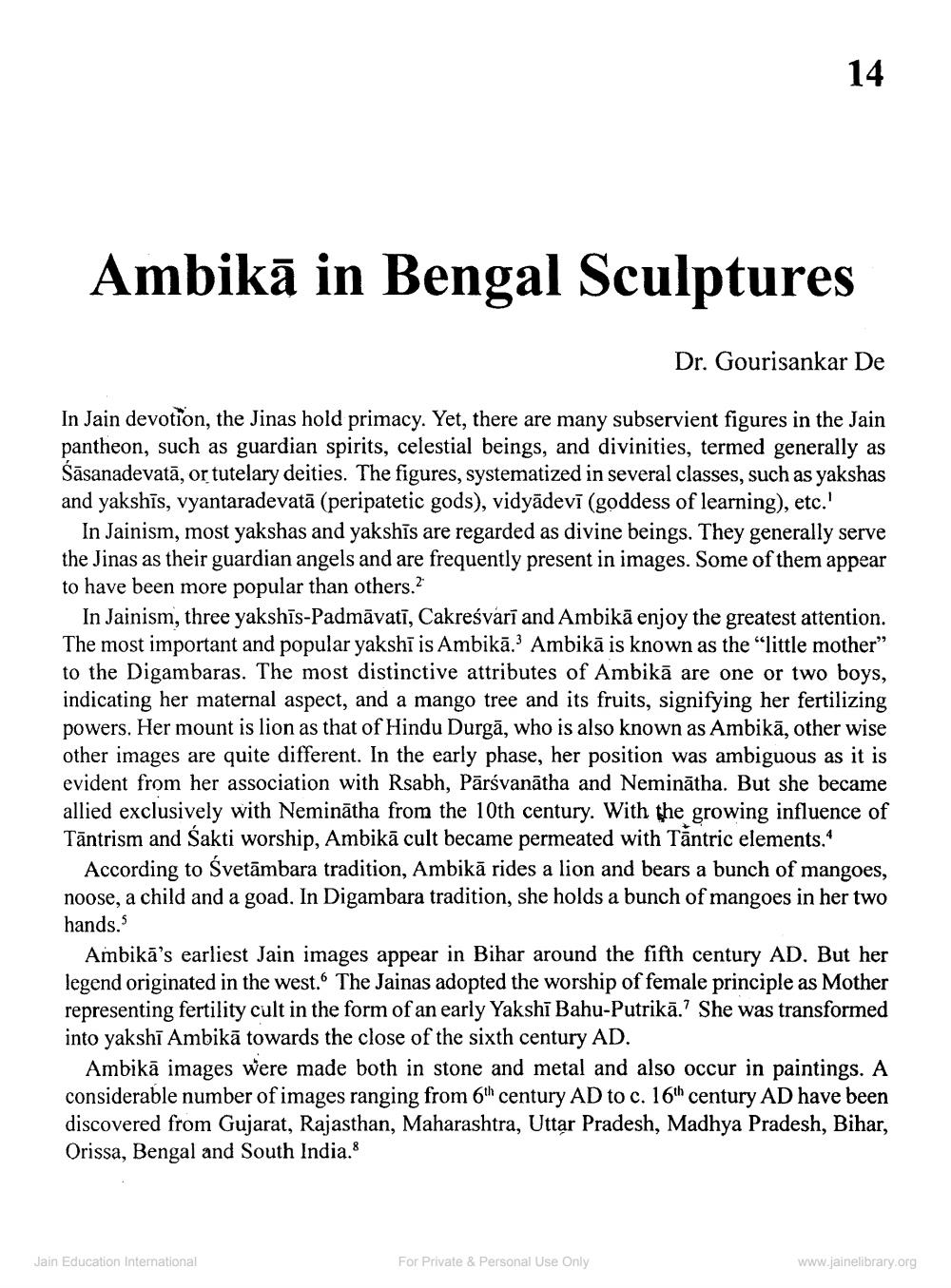________________
Ambikā in Bengal Sculptures
Dr. Gourisankar De
In Jain devotion, the Jinas hold primacy. Yet, there are many subservient figures in the Jain pantheon, such as guardian spirits, celestial beings, and divinities, termed generally as Sāsanadevatā, or tutelary deities. The figures, systematized in several classes, such as yakshas and yakshīs, vyantaradevatā (peripatetic gods), vidyādevī (goddess of learning), etc.'
In Jainism, most yakshas and yakshīs are regarded as divine beings. They generally serve the Jinas as their guardian angels and are frequently present in images. Some of them appear to have been more popular than others.2
In Jainism, three yakshīs-Padmāvatī, Cakreśvarī and Ambikā enjoy the greatest attention. The most important and popular yakshī is Ambikā.? Ambikā is known as the "little mother" to the Digambaras. The most distinctive attributes of Ambikā are one or two boys, indicating her maternal aspect, and a mango tree and its fruits, signifying her fertilizing powers. Her mount is lion as that of Hindu Durgā, who is also known as Ambikā, other wise other images are quite different. In the early phase, her position was ambiguous as it is evident from her association with Rsabh, Pārsvanātha and Neminātha. But she became allied exclusively with Neminātha from the 10th century. With the growing influence of Tāntrism and Sakti worship, Ambikā cult became permeated with Tāntric elements.
According to Svetāmbara tradition, Ambikā rides a lion and bears a bunch of mangoes, noose, a child and a goad. In Digambara tradition, she holds a bunch of mangoes in her two hands.
Ambikā's earliest Jain images appear in Bihar around the fifth century AD. But her legend originated in the west. The Jainas adopted the worship of female principle as Mother representing fertility cult in the form of an early Yakshi Bahu-Putrikā.? She was transformed into yakshi Ambikā towards the close of the sixth century AD.
Ambikā images were made both in stone and metal and also occur in paintings. A considerable number of images ranging from 6th century AD to c. 16th century AD have been discovered from Gujarat, Rajasthan, Maharashtra, Uttar Pradesh, Madhya Pradesh, Bihar, Orissa, Bengal and South India.
Jain Education International
For Private & Personal Use Only
www.jainelibrary.org




